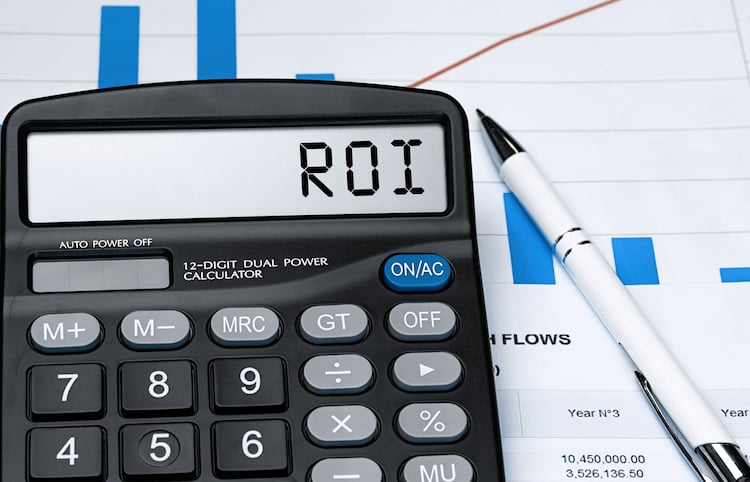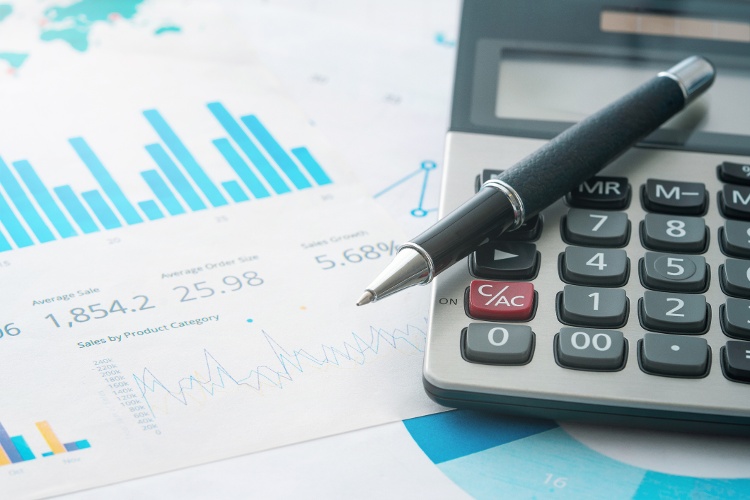Owning a rental property can be a good way to generate income and build wealth over the long term. But the truth is that not all rentals offer the same return on investment or ROI.
Return on investment measures the profitability of a rental property over a specific period of time and is expressed as a percentage.
Real estate investors use ROI to measure the performance of different rental property investments by comparing the actual or projected profit generated by the property to the cash investment made.
Factors such as rental income, occupancy levels, operating expenses, property taxes, mortgage rates, property location, and even the type of rental property purchased all have a significant impact on how good the ROI for a rental property is.
Key takeaways
- ROI, or return on investment, measures the profitability of a rental property and is expressed as a percentage.
- ROI is calculated by dividing the annual return by the cost of the investment.
- The same rental property can have two different ROIs, depending on whether or not financing is used.
- Other metrics real estate investors use to calculate return on a rental property include GRM, cash flow, cash-on-cash return, NOI, and cap rate.

ROI formula for rental property
ROI is relatively easy to calculate using the following formula:
- ROI = Annual Returns / Cost of Investment
For example, if an investment generates annual returns of $5,000 and the cost of the investment is $100,000, the ROI would be 5%:
- ROI = $5,000 / $100,000 = 5%
What is a good rental property ROI?
Even though the ROI formula is pretty straightforward, not every type of rental property generates the same potential ROI.
Factors that can increase or decrease the ROI for rental property include:
- Property purchase price and initial repair costs (if any)
- Rental income and occupancy rate
- Operating expenses such as property management fees, maintenance, and HOA dues
- Annual expenses, including insurance premiums and property taxes
- Mortgage down payment, monthly loan payment (principle and interest), and loan closing costs
The type of rental property and the basic laws of supply and demand also have a significant impact on the ROI of a rental property. Of course, experienced real estate investors understand that the ROI from rental property may vary from one real estate market to the next, and even within different neighborhoods in the same city.
Generally speaking, the higher the ROI the more profit potential the property offers, although the potential risk may be higher as well. However, a high ROI doesn’t necessarily mean there is more risk.
In the next section, we’ll discuss how the same rental property can have two dramatically different ROIs.
How to calculate ROI for rental property
Sometimes the same rental property can generate two different returns, depending on the investor. To illustrate, let’s look at the ROI calculation for the same single-family rental property acquired with and without financing.
In both examples, we’ll assume a home purchase price of $165,000, annual rental income of $22,800 (after deducting a vacancy factor of 5%), and operating expenses of 40% of the annual rent.
ROI of a rental property purchased for cash
To determine the dollar amount of operating expenses, the annual rental income is multiplied by the operating expense ratio of 40%:
- $22,800 annual rental income x 40% = $9,120 annual operating expenses
Then, the annual operating expenses are subtracted from the annual income to determine the annual return:
- Annual return = $22,800 rental income - $9,120 operating expenses = $13,680
After that, the ROI is calculated by dividing the annual return by the amount of cash paid for the investment:
- ROI = $13,680 annual return / $165,000 cost of investment = 8.3%
Based on the above scenario, an investor paying all cash for the home would have a first-year return of 8.3% on the $165,000 cash invested.
If the rent increases by 5% the following year, the ROI would increase to 8.7% from 8.3%, assuming that operating expenses remain at 40% of the annual rental income:
- Annual rental income year 2: $22,800 + 5% = $23,940
- Operating expenses year 2: $23,940 x 40% = $9,576
- Annual return year 2: $23,940 - $9,576 operating expenses = $14,364
- ROI year 2: $14,364 annual return / $165,000 cost of investment = 8.7%
The potential incremental increase in ROI year after year is one reason why investors buy and hold rental property. As long as the property is well maintained and the annual rent increases, the return on investment should also increase year-over-year.
ROI of a rental property using leverage
Interest rates on an investment property loan are generally 0.5% to 0.75% higher than loan interest rates on a primary residence. Also, lenders normally require a down payment of at least 25% of the purchase price of a real estate investment, compared to a much lower down payment when purchasing a home to live in.
However, even though financing terms are a little more expensive than purchasing a primary residence, many investors use leverage to amplify the ROI of a rental property.
Here’s how an investor might use leverage to boost the ROI of the same single-family rental property instead of paying all cash.
Let’s assume an investor makes a 25% down payment of $41,250 ($165,000 purchase price x 25%). Operating expenses remain the same, and the annual mortgage payment (principal and interest) is $7,000 per year, based on an interest rate of 4%.
The annual return is calculated by subtracting the operating expenses of $9,120 and mortgage payment of $7,000 from the annual rental income of $22,800, then dividing that amount by the $41,250 cost of investment:
- Annual return = $22,800 rental income - $9,120 operating expenses - $7,000 mortgage payment = $6,680
- ROI = $6,680 annual return / $41,250 cost of investment = 16.2%
By using leverage, the investor nearly doubled the ROI (8.3% cash ROI vs. 16.2% leveraged ROI) even though the annual return decreased by about half.

Other ways to calculate rental property return
Real estate investors have a number of ways to calculate the current and potential return from a rental property.
Gross rent multiplier
Also known simply as GRM, the gross rent multiplier is calculated by dividing the property sale price by the annual gross rent. If a rental home is priced at $150,000 and the annual gross rent is $18,000, the GRM is 8.33.
Annual cash flow
Annual cash flow is calculated by subtracting all operating expenses and mortgage payments from the annual rent collected, similar to the way a checking account is balanced each month. When there is cash left over at the end of the month, cash flow is positive, and vice versa.
Cash-on-cash return
Also known as CoC, cash-on-cash return is calculated by dividing the pre-tax annual cash flow by the cash invested in a property. For example, if an investor pays $150,000 cash for a rental and the annual pre-tax cash flow is $10,800, the cash on cash return is 7.2%.
Cash-on-cash return can also be increased by using leverage. If the same investor uses a down payment of 25% ($37,500) to purchase the rental and the annual pre-tax cash flow is $4,300, the cash-on-cash return increases to 11.5% even though there is a monthly mortgage payment.
Net operating income (NOI)
NOI measures how profitable (or potentially profitable) a rental property is without the use of leverage. Net operating income is calculated by subtracting operating expenses (excluding the mortgage payment and capital repairs) from the gross annual rental income.
If a single-family rental home generates a gross annual rental income of $18,000 and operating expenses are 40% of the rent, the NOI would be $10,800.
Cap rate
Also known as capitalization rate, cap rate is the percentage return calculated by dividing NOI by the property purchase price. If a rental home was purchased for $150,000 and the NOI for the first year is $10,800, the cap rate would be 7.2%.
Closing thoughts
When asked what a good ROI for a rental property is, the truth is that there isn’t a right or wrong answer. ROI can be higher or lower depending on the type of rental property purchased and where the home is located.
With more people working from home and moving to cities where the cost of living is lower, some of the highest ROIs for single-family rental property can be found in smaller cities and the suburbs of larger urban areas.









